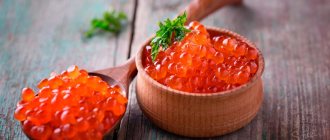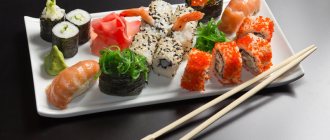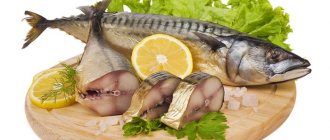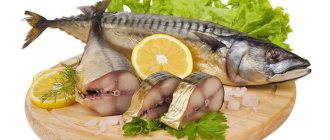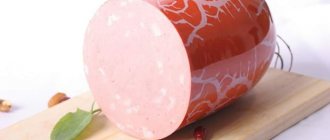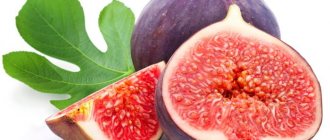One way or another, a diet during lactation poses many questions to a woman about which foods should be abandoned and what can be gradually returned to the menu. Women often have to think about whether it is possible to eat red fish while breastfeeding? This is a very healthy product, rich in microelements and vitamins important for the body. Pediatricians recommend consuming red fish in moderation, the main thing is not earlier than the baby is 3 months old. In order to protect both herself and the child as much as possible from possible negative consequences, a woman should take into account some of the nuances of its preparation and use.
Types of fish
A woman who is breastfeeding can benefit from any sea or ocean products. The main thing is to know the rate of use and method of preparation. Fish can be of any variety, as long as it is low-fat. Pike perch, hake, sea bass, and pollock are considered useful. Red fish is held in special esteem because it is rich in substances that are difficult to find in large quantities in other products. The most recommended during lactation are trout, salmon, salmon. Properly prepared fish saturates the body of mother and child with a huge amount of omega-3 fatty acids, which helps strengthen blood vessels, the muscular system, and improve blood composition. Do not forget that these products are quite strong allergens, so if you are breastfeeding, they should not be consumed immediately after the baby is born.
Beneficial features
Red fish, like other types of seafood, has a huge number of beneficial properties. The beneficial substances that these products contain have a positive effect on the functioning of all organs and systems. The difference between red fish and other varieties is its saturation with omega-3 fatty acids. This is a necessary element for maintaining the proper functioning of the cardiovascular system, it helps improve the quality of blood and the entire circulatory system. In addition, the beneficial properties of this seafood include:
- Strengthening bones, muscles, hair, teeth in both the baby and the mother, due to the huge amount of phosphorus and calcium, as well as vitamin D, which helps absorb these elements;
- Regulation of metabolic processes in the body, normalization of blood sugar levels;
- Beneficial effect on the functioning of the central nervous system, improving memory, concentration;
- Improving the visual functions of the body;
- It is a preventative against cancer;
- Normalizes the functioning of the digestive system, is quickly absorbed;
- The protein content in large quantities has a beneficial effect on a woman’s kidneys, protects them and prevents the formation of salts and stones.
Why is salted fish dangerous?
Excess salt is a contraindication for including the product in the diet of a nursing woman, because:
- an additional burden is placed on the kidneys and urinary system; if they cannot cope, swelling appears on the body due to the accumulation of fluid in the tissues;
- the cardiovascular system is overloaded and blood pressure rises;
- salt can accumulate in breast milk and change its taste, causing the baby to refuse feeding.
If excess salt causes stagnation of milk in the ducts, an inflammatory process may develop.
Why are fish dishes dangerous?
During lactation, a woman should consume red fish with extreme caution. This product is a strong allergen and it is important to follow all recommendations regarding the type of seafood, method of preparation, and time of consumption. In addition to the fact that smoked, fried, and salted fish can be an undesirable product for your baby’s health, canned fish is no less dangerous. Poor quality ingredients, which include preservatives, spices, and salts, can harm the child and cause severe allergic reactions.
Raw seafood is extremely dangerous not only for a nursing mother and baby, but for all people. After all, parasites that can develop in them without heat treatment can lead to serious poisoning and provoke the development of serious diseases. Fish dishes on the table of a nursing woman should be of exceptionally high quality and prepared correctly, based on all recommendations.
Those mothers who have previously encountered food allergies should be wary, since red fish has a huge number of allergenic properties. This can lead to a specific allergic type reaction in the newborn.
Artificially grown red fish may contain various drugs and antibiotics that farmers use for the rapid growth of livestock. These chemical additives pass through breast milk to the baby; frequent use of such a product by a nursing mother can lead to negative consequences for the health of the baby.
Seafood requires careful processing when preparing
Is it possible for a nursing mother to eat lightly salted fish and what are its benefits?
First, let's define what is meant by the name “salted fish”. If we are talking about carcasses that have been deeply salted and even dried, then such a product is definitely not recommended for nursing mothers. The fact is that the abundance of salt simply negates all the benefits of fish meat.
In addition, salt itself has a detrimental effect on the beneficial substances contained in the fish. That is why by salted fish we mean a lightly salted product.
Almost every mother can eat such a snack, but only in small quantities and if neither she nor the baby has any contraindications.
We'll talk about them in more detail below, but now let's look at the beneficial properties of the fish product.
- Most often, red fish, such as salmon, are lightly salted. These species are known for the fact that their meat contains huge amounts of omega-3 fatty acids. Our body needs these substances to maintain cardiovascular health. In addition, fatty acids help the baby’s blood system develop more actively and strengthen.
- Fish contains potassium, a substance involved in processes that maintain water-salt balance in the body. In addition, this element increases the capacity of blood vessels, thereby reducing blood pressure.
- The flesh of many fish contains selenium and vitamin C - some of the most powerful antioxidants. Such compounds help the cells of our body recover faster, fight free radicals and remove toxic substances from the body. In addition, they maintain the elasticity and health of the skin, which is important for nursing women.
- Fish contains iron, which is known to be necessary for the body for oxidative processes. All this has a beneficial effect on hematopoiesis, which means it helps to enhance lactation, since breast milk is produced from the blood.
- Recent studies have found that regular consumption of fish successfully helps fight stress and depression. After childbirth, as you know, every woman begins a rather difficult period, which often leads to postpartum depression. In this regard, fish will be an excellent helper in the fight against bad mood and stress.
- All the same omega-3 acids also have a beneficial effect on eye health. They improve vision and slow down eye wear.
- Fish is rich in vitamin D, which is one of the most important components necessary for the construction of new bone tissue. As you know, in the first year of life, infants grow very quickly, and therefore the need for this vitamin in children is especially high.
- Fish is a high-protein food. It is proteins that our body needs to actively develop, renew and recover. For this reason, fish products will be useful both for the young mother after childbirth and for her baby, to whom they will pass through breast milk.
- Consumption of fish improves metabolic processes occurring in the body. A set of useful substances and microelements allows you to speed up all reactions in the body, thanks to which the young mother and baby feel good, sleep normally, etc.
- B vitamins, in addition to benefiting the circulatory system, help the development of the baby’s brain and also strengthen its nervous system. Thanks to this, the child’s mental development occurs faster.
- Lightly salted fish is not subjected to strong heat treatment, which destroys most of the beneficial substances. This feature allows you to get the maximum benefit from each serving of the product.
Is it possible to eat red fish during lactation?
The benefits of eating red fish allow women to eat it while breastfeeding. The main thing is not to start using it in the first month of the baby’s life. This is due to the fact that before the age of 3 months, the baby’s digestive system is not yet fully mature and is not ready to become familiar with such products.
Is it possible to eat salmon?
If anyone is wondering whether it is possible to eat salmon while breastfeeding, then there is no need to doubt it. This type has a composition that improves the quality of the circulatory system, brain activity, and memory. If you consume salmon in moderation, it will not cause any negative consequences on the part of mother and baby. The main thing is to cook it exclusively steamed, in the oven or boiled. This is a fairly high-calorie product, but at the same time it is easily digestible.
Trout has similar properties, but with a slightly lower calorie content. Salmon and trout are essential sources of omega-3 fatty acids for a nursing woman and for a newborn baby.
Is it possible to have salted and smoked fish?
No matter how beneficial red fish is for a nursing woman, its properties are lost if cooked incorrectly. Namely, smoked, dried, salted, dried foods contain too much salt, which can cause swelling, water retention in the body, and increase blood pressure. Salted fish is not recommended for breastfeeding, even despite the maximum preservation of all nutrients in it. Smoked fish, unlike salted fish, loses all its beneficial substances during processing and in addition is saturated with carcinogens and other additives. Therefore, a nursing mother should absolutely not consume smoked fish.
Lightly salted fish
In order for a nursing mother to avoid problems associated with excess salt, you can eat lightly salted fish in small quantities once or twice a month or a little more often if the child is not allergic to the product.
A nursing mother should give preference to coho salmon, sockeye salmon, chum salmon, and pink salmon caught in the wild. These varieties of red fish, unlike artificially bred trout and salmon, are not as rich in omega-3 fatty acids, but are safer for health because they do not contain antibiotics.
You can pickle chum salmon or pink salmon yourself at home by choosing the appropriate recipe. Since lightly salted fish cannot be processed at high temperatures, use a deep-blast product that has not been re-frozen. This storage technology kills pathogenic microflora.
If a pregnant woman does not refuse fish dishes, the risk of an allergic reaction in the child is lower. But in any case, lightly salted fish should be introduced into the diet carefully, starting with microscopic portions. Monitor your baby’s well-being for two days after the first attempt to eat fish.
Before you begin to gradually increase the portion, make sure that the baby is not allergic to the product. To learn how to identify symptoms and treat food allergies, read the article here.
A small sandwich with a piece of lightly salted sockeye salmon or coho salmon, or a salad with such a product will please a nursing mother and add nutrients to the baby’s body. The dish can be included in the menu after the child reaches three months of age.
Fish is the most valuable food product for humans. And a nursing mother’s diet must include fish dishes. But is all fish allowed during breastfeeding? Let's consider what kind of fish can be consumed during breastfeeding, in what quantity, and whether there are contraindications for consuming this product.
Useful article: What you can eat while breastfeeding
Rules for eating red fish during breastfeeding
It is advisable to start eating fish while breastfeeding in the morning with a small piece of 30-50 g. Then you need to monitor the baby’s reaction throughout the day. It is advisable not to try a woman 2 new products at once, so that it is easier to find out what could cause the reaction. If negative consequences are found in a child (allergic reaction, constipation, diarrhea, colic, poor sleep), then this product should be removed from the diet. It is advisable to continue introducing the newborn to this ingredient no earlier than 1 month.
When can it be introduced into the diet and in what quantity?
It is advisable to introduce red fish into the diet when breastfeeding no earlier than the baby is 3 months old. For the first time, 50 g per day is enough, then you can increase the portion of the fish dish to 100 g per day. It is enough to eat fish twice a week.
Is this product suitable for nursing mothers?
Fish is undoubtedly very beneficial for mothers during breastfeeding.
- Its nutritional value is not inferior to meat, and is also a source of easily digestible protein.
- In addition, fish meat contains a large amount of microelements necessary for a woman during lactation.
- Also, the benefits of this product are due to the high content of omega-3 and omega-6 fatty acids, which are extremely important for the functioning of some internal organs, improve the body’s metabolic processes, and normalize blood pressure.
A woman can certainly eat fish while breastfeeding if she ate it during pregnancy. Otherwise, you should give it up for a while.
When answering the question of what kind of fish you should eat, it should be noted that the most preferable product is the one caught in your region. It is more valuable than frozen, which loses half of its beneficial properties. Women who are wondering whether it is possible to eat red fish when feeding their baby should be aware of the possible allergy of the newborn to this product.
Steamed
Also find out whether boiled beets are good for breastfeeding and the whole truth about pumpkin seeds for breastfeeding.
When should you refuse?
Fish is completely contraindicated during lactation only if the mother has a food allergy. Then you can introduce it into the diet no earlier than 8 months after birth, in very small portions.
However, there are some types of fish products that are not recommended to be consumed:
- salted fish is prohibited when breastfeeding - it contains a large amount of salt, which is harmful to kidney function;
- smoked fish is undesirable when breastfeeding, since it does not contain any beneficial substances, but contains many carcinogens;
- raw fish is strictly prohibited due to the possible presence of parasites;
- dried and dried fish are also harmful - they can spoil the taste of milk.
Nutritionists do not advise a nursing mother to eat the meat of long-lived marine inhabitants, as it can accumulate toxic substances. This applies to sharks and mackerel.
What dishes are healthy for a nursing mother?
Now let's try to figure out what kind of fish a woman can eat while breastfeeding.
- Boiled, steamed. It is recommended to eat it in the first months of a child’s life, when the danger of allergies is highest.
- Baked. It should be introduced into the diet gradually, observing the baby’s reaction to changes in the composition of milk.
- Stewed. It also retains all the beneficial substances, so it is acceptable from the first months of breastfeeding.
A fairly popular way of preparing fish meat is frying, but it is impossible to unequivocally answer the question of whether it is possible to fry fish while breastfeeding. During such processing, meat loses almost all of its properties and becomes, if not harmful, then completely useless.
Healthy lunch during lactation
What can be dangerous about dishes made from this product?
- The main danger of fish dishes during lactation is an allergic reaction in the baby. Introduce them into the diet gradually, start with portions of no more than 50 grams, after which carefully monitor the baby’s condition. If signs of allergy appear, fish products will have to be abandoned.
- This marine product may be harmful in some forms. For example, when asked whether it is possible to eat smoked fish while breastfeeding, doctors answer in the negative. Such a product accumulates dangerous carcinogens, which are extremely harmful to the functioning of internal organs, and in some cases can cause cancer.
- Many nursing mothers are interested in whether it is possible to eat salted fish. Excessive amounts of salt can lead to impaired kidney function, osteochondrosis, and changes in the taste of milk.
- Such products may be poorly processed and may also be contaminated with parasites.
Red salted fish is one of the most delicious foods for women during lactation; it is not surprising that many women do not want to give it up completely. This delicacy is quite allergenic, so you can only eat it a few months after giving birth in very small quantities.
Benefits of a seafood product
| Variety | Benefit | Harm |
| Salmon (trout, salmon, pink salmon, chum salmon) | Contains a record amount of healthy fatty acids that a woman needs during lactation, reduces the risk of blood clots. | Red fish is useful only in small quantities, as it is quite allergenic. |
| Cod (hake, cod, burbot) | Cod meat is the most dietary, and contains a huge amount of essential vitamins and microelements. Strengthens bones, teeth, improves immunity. | Cod contains a lot of vitamin A, which, if consumed in moderation, can lead to hypervitaminosis. |
| Perch (perch, pike perch) | Perch meat is considered dietary, has a beneficial effect on the digestive and nervous system, and removes toxins from the body. | Perch can accumulate heavy metal compounds, so you can eat it in small quantities. |
| Carp (carp, crucian carp) | The meat is very rich in protein, filling and tasty. Contains amino acids, antioxidants, and is easily absorbed by the body. | Carp bred in captivity may contain growth accelerators that are not advisable to consume during lactation. |
How to cook?
Women often wonder which fish dishes are safest for a nursing mother and at the same time taste good and are easy to prepare.
When caring for a newborn, it is not always possible to spend a lot of time in the kitchen cooking, but this is not a reason to deny yourself delicious food. We can recommend the following recipes to young mothers.
Healthy seafood product
Mashed potatoes with pollock in sour cream sauce.
- Place the peeled pollock along with the onion in a deep frying pan.
- Pour in hot water.
- Simmer the dish for no more than 10 minutes.
- Next mix 100 gr. sour cream with 1 tbsp. spoon of flour, add to the dish.
- Simmer covered for another 15 minutes.
- While the fish is stewing, boil the potatoes until soft.
- Add a little butter, cream and puree it using a blender.
- Pour sour cream sauce over the puree, place pollock on top and serve.
Fish soup for a nursing mother.
- Pour 300 g of fresh carp into 2 liters of water and cook until tender.
- Remove fish meat from the broth and add allspice, bay leaf and chopped potatoes.
- Cook for 15 minutes.
- When the potatoes are ready, add 4 tablespoons of your favorite cereal (barley, rice, millet) to the dish and boil until tender.
- Finally, add the sauteed carrots and celery and 2 tablespoons of tomato paste, after 2-3 minutes the soup will be ready.
Find out whether you can eat prunes while breastfeeding and when your milk comes in after childbirth.
Return to description
So, the answer to the question of whether you can eat fish while breastfeeding has been found. It is not only possible, but also necessary to eat fish; the main thing is to choose safe types of this product and take a responsible approach to the cooking method.
>
Quite often, especially on holidays, young mothers are faced with gastronomic temptations in the form of dishes and snacks on the table.
Almost no feast is complete without seafood, and therefore today we will talk about whether salted fish can be eaten while breastfeeding. This cold snack is invariably popular, and therefore every nursing woman should know about its benefits and harms.
Tips for choosing
To protect both herself and the baby from negative consequences, a woman should be able to choose quality products.
Tips for choosing red fish when breastfeeding:
- It is not recommended to buy artificially grown fish (the place of cultivation must be indicated on the label);
- It should be chilled, not frozen;
- When pressed, the meat should be elastic;
- Too rich red color of the meat indicates artificial cultivation and the addition of chemicals;
- The fish must be whole, clean, with transparent, not cloudy eyes, without an unpleasant odor.
Is it possible to have lightly salted salmon while breastfeeding?
The degree of salting of fish determines its number of beneficial and harmful properties. If the fish is salted, that is, it has gone through the stage of deep salting, such fish contains practically no valuable substances. But lightly salted fish, such as lightly salted salmon, has less harmful effects on the human body.
The calorie content of lightly salted salmon depends on the salting method and averages about 200 kcal / 100 g of product.
Salmon, like any other red fish, is a highly allergenic product. In addition, it is not advisable to eat any fish in salted form. Salt in such a dish disinfects and kills germs, which is a big plus. However, for these purposes, the salting conditions and salt dosage must be strictly observed. Otherwise, there is a high probability of becoming infected with worms or other parasites.
In addition, salt can lead to edema, increased blood pressure and dehydration, and negatively affect kidney function. Therefore, the conclusion is obvious - lightly salted salmon is not recommended during breastfeeding.
Store-bought lightly salted salmon is often prepared using various chemical additives that are harmful to any person, especially a baby. Therefore, if a woman still decides to try this type of fish, preference should be given to a dish prepared independently.
Red fish recipes for nursing mothers
Only a properly prepared dish can benefit the mother and child’s body. Fish dishes for a nursing mother should be dietary, with a small amount of ingredients.
Fish soup
Ingredients:
- Red fish – 300 g
- Potatoes – 2-3 pcs.
- Rice – 4 tbsp.
- Carrots – 1 pc.
- Celery – 1 piece
- Tomato paste – 2 tbsp.
Method of preparation: Boil seafood in salted water with the addition of bay leaf. Separate meat from bones. Add diced potatoes and rice cereal to the fish broth. After 15 minutes, add carrots and celery sauteed in tomato paste, as well as boiled fish meat. Boil for another 4-5 minutes, add herbs. The soup is ready.
Steamed fish cutlets
Ingredients:
- Red fish fillet – 300 g.
- Egg – 1 pc.
- Oatmeal – 1 tbsp.
- Onion – 1 pc.
- Lemon – 1 slice
- Greenery.
Method of preparation: Grind seafood meat in a meat grinder, add chopped onion, oat bran, egg, finely chopped herbs. Mix the resulting mixture well, add salt, pepper to taste and lemon juice. Let the fish mixture sit for 15 minutes in a cool place. Next, you need to form small cutlets and steam them for a few minutes until cooked.
A nursing mother should return to her usual menu gradually, taking into account all the recommendations of pediatricians. Red fish on a woman’s table during breastfeeding should be of exceptionally high quality and prepared with maximum benefit for the body. Fatty varieties of fish, as well as improperly prepared fish dishes, will not bring any benefit, but will only worsen the health of mother and baby. An irreplaceable source of omega-3 fatty acids not only helps a woman cope with postpartum weakness of the body, but also improves the functioning of many organs and systems of a young child’s body.
How to cook trout and salmon for nursing
When preparing trout and salmon, use fresh herbs, sour cream or lemon juice. Porridge, rice, boiled potatoes or mashed potatoes are suitable as a side dish. For the first tasting, baked or boiled salmon or trout are perfect. To diversify the diet of a nursing mother, we offer recipes for simple and tasty fish dishes.
To prepare baked fish, the carcass is washed and cleaned, cut into pieces two centimeters thick and soaked in salted water for two hours. Then the pieces are salted and lightly peppered, wrapped in foil in groups of three and placed on a baking sheet with low sides. Pour some water into the bottom of the baking tray. Bake the fish at 180 degrees for 30-40 minutes.
Fish balls
- Fish fillet - 300 g;
- Chicken egg - 1 piece;
- Breadcrumbs - 1 tbsp. spoon;
- Grated hard cheese - 50 grams;
- Carrots - 1 pc.;
- Onion 1 pc.;
- Salt and pepper to taste.
Boil fish meat in salted and peppered water, grind until minced. Peel and chop the onions and carrots. Mix the prepared minced meat and vegetables, add a raw egg and a little broth after cooking the fish. Mix the ingredients thoroughly, add pepper and salt, and form the mixture into balls. Line a baking tray with baking paper and place balls on top. Sprinkle the dish with lemon juice and place in the oven. Cook for 1.5 hours at 180 degrees. 15 minutes before ready, sprinkle the balls with breading and grated cheese.
Fish stuffed with buckwheat porridge
- Fish (whole carcass) - 750 g;
- Boiled chicken eggs - 2 pcs.;
- Boiled buckwheat - 100 g;
- Onion - 1 pc.;
- Sour cream - 1 glass;
- Flour - 1 tbsp. spoon;
- Salt to taste.
The whole carcass is cleaned, the abdomen is cut, the head is separated and the entrails are removed. The inside of the fish is thoroughly washed, dried with a towel, and salted. The eggs are cut and mixed with buckwheat porridge. The mass is placed inside the carcass and the fish is dredged in flour, put in the oven for five minutes and then greased with sour cream. Then bake the dish for half an hour at 180 degrees, brushing the fish with sour cream every five minutes.
Steamed fish cutlets
- Fish fillet - 300 g;
- Chicken egg - 1 pc.;
- Oat bran - 2 tbsp. spoons;
- Onion - 1 pc.;
- Lemon juice - 1 teaspoon;
- Greens (parsley and celery) and spices to taste.
Pass the fish through a meat grinder, finely chop the onion and mix with the resulting minced meat. Add bran and egg. Chop the greens and add to the minced meat. Mix the mixture, add salt and pepper, and add lemon juice. Stir and leave for 15 minutes. Cutlets are formed from the resulting mass and steamed for two to four minutes. More recipes for nursing mothers at the link https://vskormi.ru/mama/recepti-dla-kormiashih-mam/.
Source

